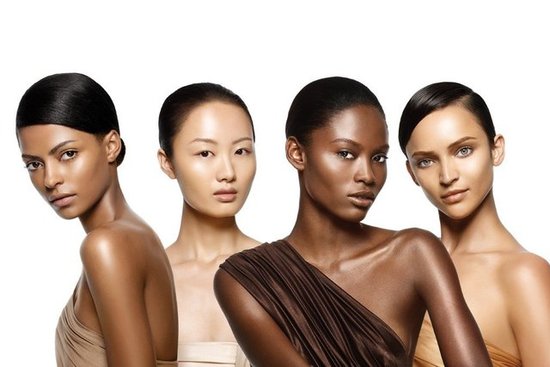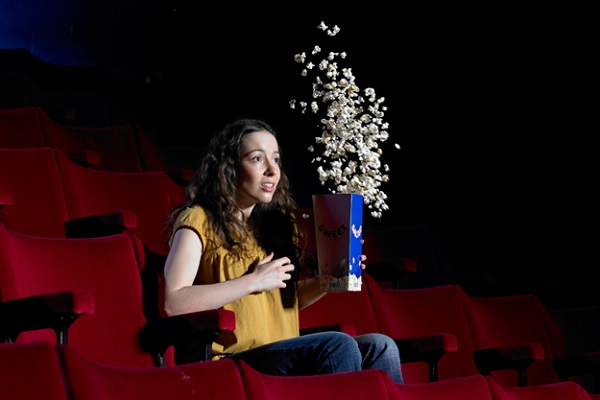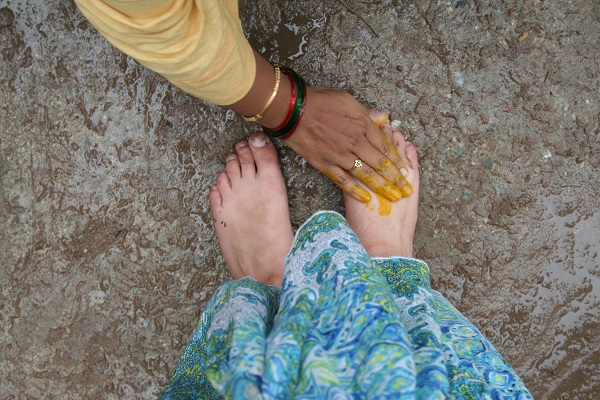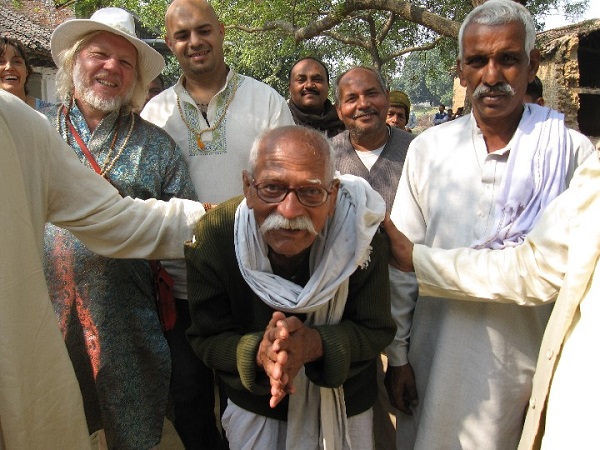Shweyta Mudgal was thrilled to know that Americans coveted her skin colour – and then her ‘fair’-skinned daughter was born.
 My grandmother has been dark-skinned all her life. The colour of milk chocolate!
My grandmother has been dark-skinned all her life. The colour of milk chocolate!
Her daughter – my mother, has always been light-complexioned; alabaster-like, like the colour of daylight on a beautiful morning!
Me – when I was born I am told I was somewhere between ochre and honey. Until I decided to go out and ‘play in the sun’ every day, ending up a shade of burnt sienna for most of my childhood. Once the sun-play stopped and I moved out of India to the States, my colour lightened and became what it is now (as suggested by the make-up world) – wheatish medium-toned.
My daughter was born the colour of peaches and cream. Mixed together, in the exact proportion, to form a flawless light creamish-pink colour that I refer to as ‘baby blush.’ Over the course of the past 19 months of her life, she has managed to keep just enough sun under her skin to move on to more peach and less cream, in the process being labelled the “fairest one of them all” in the family palette.
Evidently, the skin-tone lineage in our family, studied over the cross-section of its surviving generations, clearly alternates between dark and light. For instance, in a picture taken standing between them, I am the brown vada between the light-coloured pavs that are my mother and daughter. No surprise then, in an openly in-your-face kind of society such as ours in India, I looked back confounded when faced with this recurring query throughout my childhood: “How come you are so dark while your mother is so fair?” (That my name also literally means ‘white’ in Sanskrit didn’t help at all. Really! What were you thinking, Mom?)
This oft-asked question had affected me enough, I am told, to have created one of the funniest childhood memories of my life. My juvenile brain had finally decided, one fine day, that the solution lay in mommy’s home-whipped white butter. She still cracks up when she recounts how she found me sitting on the kitchen floor with butter smeared all over my face one evening. All this, so I could be as fair as she was!
While the fascination with human skin colour has been of much interest and intrigue to Indians for eons (more so for women, the so-called ‘lighter sex’), it has taken on insane levels in some other Asian countries. Vietnam, for instance.
Creams, fairness gels, deodorants, soaps, moisturisers and even pills that make skin-lightening promises abound on the shelves of convenience stores and supermarkets alike, all over this country. In sultry, humid and 100 deg F (roughly 37 deg C) temperatures in Saigon, women can be seen covered head to toe (for no religious reason), dressed in jeans or slacks, face masks (that double up into anti-pollution and anti-sun barriers) and long-sleeved hand gloves – all in an attempt to shield their skin from the sun.
If you asked their darker Cambodian neighbours, they wondered: why the fuss? After all, they would ask, aren’t the Vietnamese already fair enough? Makes for a good pun, that phrase there, but the Vietnamese, on the other hand, will tell you, ‘fair enough’’ is not good enough!
The significance of being ‘white’ (bordering on albino-like sometimes, what with all the lightening products and procedures available in today’s market) in the cultural paradigm of Asian countries, is enormous. Not just on the socio-economic level but on a global identity level – where Asian women, in their quest for beauty, are trying to achieve the colour of their Caucasian counterparts. In Asia, ‘whiteness’ of the skin has always been directly proportional to beauty and affluence. A dark or tanned skin belonged to a worker toiling in the fields all day, thus reflecting poverty, physical hard work and a socially inferior status.
This obsessive pursuit of fairness leads to accidents, as well. For instance, in today’s day and age, with countless fairness products made available to them, women of the lower social strata in countries like Cambodia often resort to making uninformed choices. Partly due to their ignorance and partly due to the products’ unaffordability, they end up buying cheap skin lighteners, the application of which results in severe skin damage and even death in some cases, on account of their high mercury and/or lead content.
My analysis of this fairness craze has brought me to establish my own hypothesis – all we want is to be like our neighbours on the left. Take a look at the map of Asia – this pursuit of fairness starts from India, Bangladesh, Burma, Thailand, Malaysia, Singapore, Indonesia, Cambodia and the Philippines, who wouldn’t mind going a few shades lighter, say, like the Vietnamese. The Vietnamese, Chinese, Taiwanese and South Koreans would prefer going still whiter like the neighbours on their left, the Japanese. And the Japanese, not content with their high rank on the Asian shade card, are vying for the Caucasian-like radiance of the Americans (the white Americans, to be specific).
The Americans, infamous for doing things diametrically opposite to the rest of the world, obviously wouldn’t mind bartering their ‘ivoriness’ for some ‘colour’, the pursuit of which leads them to natural or unnatural tanning practices. Tanning of the skin is their equivalent of ‘whiteness’ in Asians, in terms of desirability.
While most Westerners tan naturally by simply lying under the sun, usually by the pool, on the beach or on a lawn, the more popular method that Americans prefer is that of cosmetically tanning themselves indoors, on a bed or in a booth in a tanning salon. Either way, the tan is achieved by exposing one’s skin to UV radiation; the overexposure of which can adversely affect one’s health causing skin cancer (melanoma), cataracts, premature aging and wrinkling of the skin, etc.
Having sun-kissed skin is so highly coveted in the West, that to my surprise, I found myself at the receiving end of compliments, in school here, for being the colour that I am. It was ironic! To be appreciated for something that one had been chided for in their growing years, naturally felt wonderful!
To me, America became the land that loved and welcomed coloured skin, non-judgmentally. Granted, this nation was not always this colour-uncoded, going by its history, and that parts of it are still not as non-discriminatory. Yet, I found that overall, cities such as Los Angeles, New York, Chicago and several others celebrated their colour diversity. I had classmates, school staff and co-workers telling me they wished they had some of my colour. That for the first time, someone wanted to be – the colour of me!
The natural Asian tan was a coveted one in America. Here, hues of black, brown, tan, olive, yellow and white seemed to co-exist in harmony, often blurring lines and blending in with each other to create new shades. Black and white marriages yielded light brown babies, as did brown and white marriages. Yellow and white marriages resulted in white babies with Asian features, or vice versa. This was the Land of Colour, yet free of Colourism! Here, the Colour Code did not apply to me anymore. Finally, I had been set free!
Until the day my peaches-and-cream daughter was born. And I took her out for her first walk by the Hudson river. A much elder mother-daughter duo, probably of Asian origin, stopped to admire the little one. “She’s beautiful. And soooo fair!” they said as I smiled, opening my mouth to say, “Thanks!” and gracefully accept the compliment. Until they looked me up and down and added, “Is she your daughter?”
What can I say? I am always going to be her nanny!
A Mumbaikar by birth and a New Yorker by choice, recently-turned global nomad Shweyta Mudgal is currently based out of Singapore. An airport designer by day, she moonlights as a writer. ‘Outside In’ is a weekly series of expat diaries, reflecting her perspective of life and travel, from the outside-in. She blogs at www.shweyta.blogspot.com and loves being referred to as her daughter’s nanny by unsuspecting strangers.
(Picture courtesy bellasugar.com)




